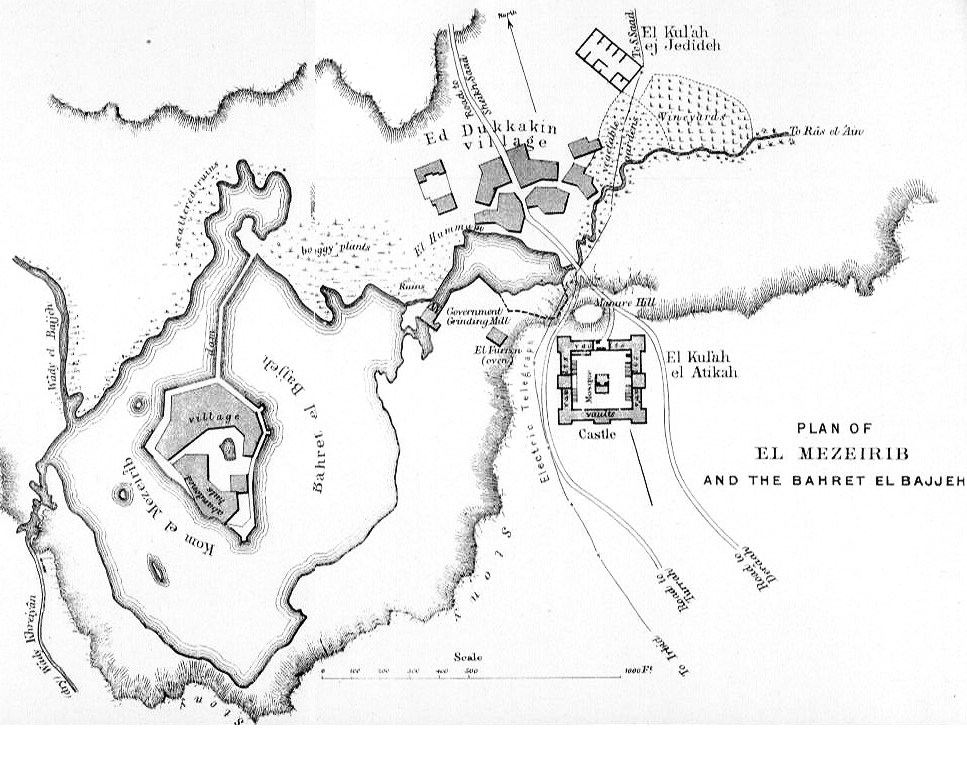, or "the lake of Muzeirib"
This lake, which is fed by the strongest springs of the entire region (Ras el Ain) located directly northeast, had compared to today, in former times still much larger dimensions. The settlement hill, Kom el Muzeirib, located on a lake island and still unexplored, was probably of paramount importance 3,000 years ago. Because of the unique feature of the lake, the local situation was variously equated in the literature with the Casphon / Casphor of the Maccabean books of the Bible.
It is certain that the lake was protected with its nearby strong sources of 2 in parts still preserved castles. Although it is reported in the literature just by the Kulaat el Atika that this is an Arab foundation, but revealed Greek inscriptions and the clear design discovers also, that both castles where built as an Auxilliary Fort in the Quadriburgia style , which where often used at the turn of times.

The water level of the lake, of 443m asl, created the possibility of supplying the Qanat Fir'aun with a required large amount of water of additional approx. 200l / s. Outside of the village Area of Muzeirib, it was possible to prove that the trench system in the direction of Abou al Qantara is still present today.
A sidebranch for a additional supply of Tell el Ashari from the Qanat Fir'aun, via a secondary line there is conceivable. Similarly, a short aqueduct route from the lake in the direction of the Tell el Ashari would be conceivable, but no other Cityarea of the ancient settlement (possibly Dion) could have been reached by these water supplies in terms of height. This would have been possible anyway on the countless sources in its vicinity.
You can also find more information here The places of the Decapolis under the sub-site Dion
Explicitly, I would like to explain at this point that there are no indications of the aqueduct immediately on site (in Muzeirib), this also applies to old travel reports! The text excerpt from G. Schumacher's -Across the Jordan, which is cited in the book "Water for the Decapolis", is also not more plausible by multiple entries (4x in the book), especially because the cited text passage was deliberately or just by chance, has been shortened through the author of these book. The following sentence already shows us that the two parallel rows of stones are not a remainder of an aqueduct channel, but are widely spaced stones, similar to a collonade, which were separated by a broad street on which market was often held , Here is the correct excerpt from Schumacher's book.
 G.Schumacher, Across the Jordan - S.165
G.Schumacher, Across the Jordan - S.165In the further course of the Qanat Fir'aun follows the pressurepipe at Abou el Qantara.